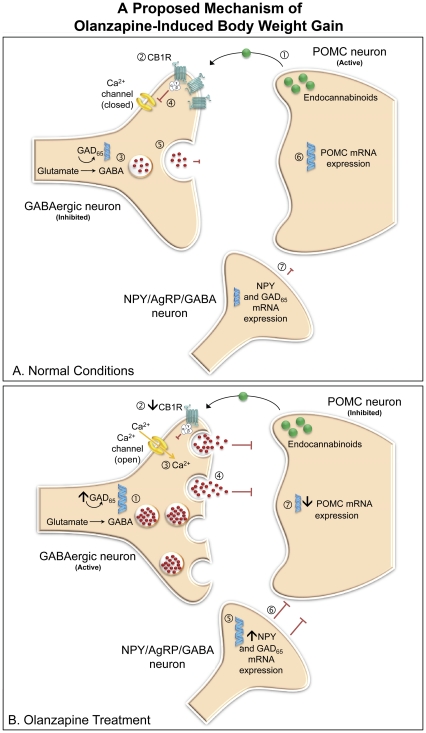Figure 6. A Proposed Mechanism for Olanzapine-Induced Weight Gain through Interactions Between POMC, NPY, CB1 and GABA systems.
(A) Normal Conditions. Schematic illustrating proposed inhibitory synaptic transmission to the POMC neuron modulated by NPY, cannabinoid and GABAergic systems under normal conditions. (1) Endogenous cannabinoids are released from the post-synaptic POMC neuron and retrogradely activate CB1 receptors located on the non-AgRP GABAergic neuron (2). GABA is synthesised from glutamate via the rate limiting enzyme GAD (3), however G-protein sub-units coupled to the CB1R inhibit the opening of calcium channels (4), which reduces vesicular release of GABA from the presynaptic terminal to the POMC neuron (5), disinhibiting POMC (6). A number of NPY neurons co-express GABA and can also inhibit POMC. These NPY/AgRP/GABA neurons synapse on POMC neurons and can regulate POMC cell activity (7). (B) Olanzapine Treatment: Our data demonstrates that olanzapine decreases POMC mRNA expression and CB1R binding density, whilst simultaneously increasing NPY and GAD mRNA expression. Based on these findings we suggest a potential mechanism contributing to weight gain during olanzapine treatment. (1) Increased GAD mRNA expression enhances the potential for GABA production, whilst (2) decreased CB1R density following olanzapine treatment may remove inhibition of calcium channels (3) and allow vesicular release of GABA (4). The combined effect may be to increase GABA production and release. (5) Olanzapine increases NPY mRNA expression, which can inhibit POMC activation (6). Therefore, reduced CB1R density, and enhanced GAD and NPY may contribute to the suppression of POMC (7). As POMC is an important anorexigenic peptide, its prolonged inhibition during olanzapine treatment may lead to increased body weight and adiposity side-effects.

